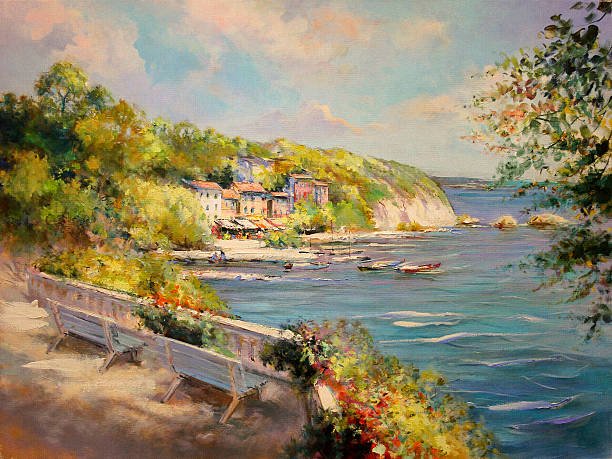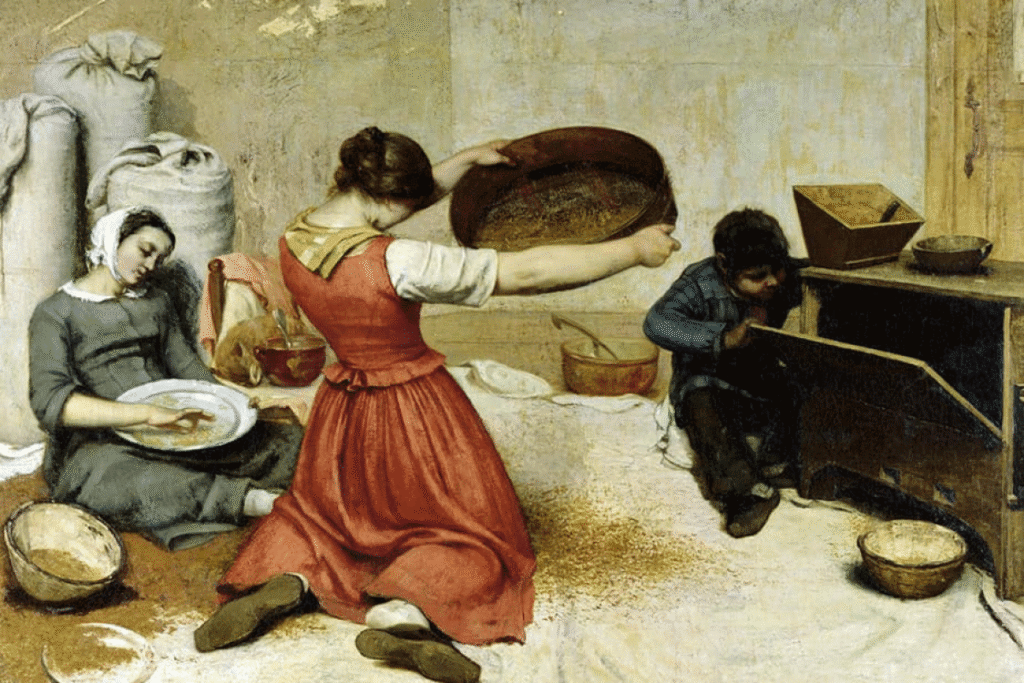The journey from realism to expressionism represents one of the most profound transitions in Western art history. While realism aimed to depict life faithfully, expressionism brought the artist’s inner world to the forefront, breaking with objectivity and prioritizing emotion.
Both movements arose in response to intense social contexts. Realism was born in the 19th century as a critique of romantic idealism, while expressionism flourished in the early 20th century, marked by the existential crises of the modern world. Understanding this transition is also reflecting on how art interprets human feeling over time.
Realism: Society Reflected in the Canvas
Realism emerged in France around 1850, led by Gustave Courbet, who wanted to paint life as it was. His famous artistic manifesto stated: “I cannot paint angels because I have never seen one.” This desire to depict everyday life, laborers, and unembellished reality appears in works such as A Burial at Ornans (1849), considered a milestone of the movement.

As Linda Nochlin points out in Realism (1971), realism not only imitated reality but critically analyzed it. Realist art functioned as a political tool. By depicting social inequalities, artists aimed to raise awareness and provoke change.
Besides Courbet, figures like Jean-François Millet and Honoré Daumier stood out. In Brazil, Almeida Júnior became a leading realist painter, portraying rural scenes with a sensitive lens.
Expressionism: When Art Becomes an Emotional Cry
Over time, the rational gaze of realism no longer sufficed to address the anguish of the 20th century. Accelerated industrialization, wars, and urban changes made room for a more subjective art. Thus emerged expressionism, a movement unconcerned with visual accuracy and focused instead on emotional intensity.
One of the early icons was Edvard Munch, whose painting The Scream (1893) became a symbol of modern despair. In Expressionism (Norbert Wolf, 2004), the author claims that the expressionist aesthetic “does not seek to represent the world, but to interpret it through inner chaos.” Artists distorted forms, used bold colors, and created compositions that provoked immediate emotional reactions.
In Germany, the Die Brücke group (“The Bridge”) was highly influential, bringing together artists like Ernst Ludwig Kirchner. Der Blaue Reiter (“The Blue Rider”), led by Kandinsky, pushed the movement toward spirituality and abstraction.
Feeling Beyond Seeing
The transition from realism to expressionism was not just aesthetic—it was philosophical. The focus shifted from the external world to the intimate landscape of the soul. Even today, these influences echo in contemporary art. Painters like Francis Bacon and even modern photographers explore emotional distortions rooted in expressionism.
Institutions such as MoMA in New York regularly exhibit works from both movements, demonstrating how artistic sensitivity reflects the times. In a world in constant flux, art remains a way to feel what we often cannot say.
The journey from realism to expressionism reveals that art is more than a mirror of the world—it is a vessel for the deepest human experiences. When the brush shifts from capturing what the eyes see to expressing what the heart feels, a new visual language is born, one that embraces chaos, vulnerability, and emotional truth.
Today, this transition remains a vital reference for artists navigating a complex and fragmented world. In an era of overexposure and superficiality, returning to these movements is an act of artistic depth and resistance. Realism teaches us to observe the world carefully; expressionism invites us to explore our inner landscapes. Together, they remind us that art remains a powerful, emotional, and transformative force.



